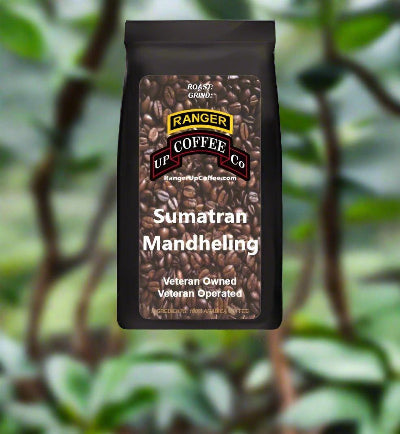Sumatran Mandheling Coffee
- 40 in stock
Description
Sumatran Mandheling Coffee
Indonesian coffees generally have a lower acidity than the high acidity coffees from Central America and East Africa, and this is true of Sumatran Mandheling, too. Sumatran Mandheling is a full-bodied gourmet coffee, sometimes called the “thickest coffee in the world,” with chocolatey, earthy, vegetal notes, and an herbal aroma. It makes a unique, complex cup for the adventurous coffee fan.
Growing Conditions
Indonesia is the world’s fourth biggest coffee producer. While most of the coffee grown in Indonesia is low-altitude Robusta, Mandheling coffee beans are Arabica. They are grown on the fertile, volcanic slopes of Mount Leuser and in the wet highlands near the port of Padang, in the Balak region of West central Sumatra.
Mandheling (pronounced “Man-dail-ing”) is not the name of a region but of the people who live in this area of Sumatra and do the bulk of the coffee production. Most of this work is done by small farmers.
A Brief History of Indonesian Coffee
In the late seventeenth century, the Dutch governor of India sent Typica seedlings from Yemen to the Dutch governor of Jakarta, the capital of Indonesia. The Dutch wanted to grow their own coffee so that they could bypass the Arab merchants’ monopoly on the coffee trade. After a few bad harvests the plants grew, and in 1711 the first coffee exports were sent from the island of Java to Europe by the Dutch East India Company. Dutch colonialists established large plantations on Java, and the island soon became the largest coffee supplier to Europe, and would continue to be until the middle of the nineteenth century when it was eclipsed by Brazil. The island was virtually synonymous with coffee, and to this day coffee is commonly referred to as “java.”
In 1876, the coffee rust disease swept through Indonesia, wiping out most of the Arabica strains. Robusta was introduced to East Java in 1900 as a substitute. Robusta was a hardier plant, and could be grown at lower altitudes. Today, the majority (85%) of the coffee grown in Indonesia is Robusta, while the rest (including Sumatran Mandheling) is Arabica.
The Dutch-owned plantations on Java were nationalized in the 1950s, soon after independence and managed as state-owned plantations. This revitalized the industry and new varieties of Arabica were introduced in the 1950s, especially in Sumatra and Sulawesi, which became the dominant coffee producing regions. These varieties were also adopted by smallholders through the government and various development programs.
A Sumatran Tradition: Giling Basah
Giling Basah, or “wet-hulled” coffee, is the name for traditional Sumatran coffee. Wet-hulling is one of the things that makes Sumatran coffee unique. So, what is wet-hulled coffee? How is it different from the normal “wet-process” or washed coffee? And why do the Sumatran farmers process their coffee in this way?
The Sumatran farmers start just like most coffee growers around the world, using the wet-process. The coffee cherries are picked by hand. Then the coffee cherries have their skins removed (or pulped) and are left in tanks to ferment overnight. With Mandheling coffee, the pulping is usually done with a hand-crank drum, which is sort of like a cheese grater that peels off the skin of the fruit.
After the overnight fermentation, the loose fruit layer is washed off. At this point, the two methods diverge. In wet-processing, the beans are left to dry in the sun for twenty days or longer, and then stored in a warehouse until the hull or parchment is dry enough to be easily removed, revealing the dried green bean inside.
In wet-hulling, the farmer does not wait for the hull/parchment to dry. They dry the coffee for only a few hours and then sell the wet parchment coffee to a drying mill. There the beans are dried for just a few days and then sent to a special machine called a wet-huller. This machine uses friction to take the wet, tightly attached parchment layer and rip it from the water swollen bean, which is often whitish blue, rather than the green bean we are used to seeing.
Afterwards, the coffee beans are laid out on tarps or clean patios to dry in the sun for several days, and are raked frequently so that they dry evenly.
Why is the coffee torn from its shell when it is still wet? Why is the bean left to dry without its protective layer? The short answer is that this method is much faster than the normal method. In Central America, for example, the time from the harvest of the coffee cherry to the export might be 2 to 3 months. The Sumatran farmer, on the other hand, can export his or her coffee in under a month.
There are obvious financial reasons for the quick turn-around. The faster the farmer can export his coffee, the better it is for business. But Indonesia also faces a challenge in coffee production not encountered in other major coffee systems: extreme, erratic weather. The climate is very humid, which means that the coffee cherry is on the tree for months longer than in other climates. The Indonesian coffee picker needs to go to the tree many more times to select the ripe fruit, usually every week, whereas in Central America the average coffee picker might visit a tree three times per season.
Also, drying coffee in Indonesia is a huge challenge. It is a wetter, cooler climate than East Africa and Central America. The growing season in Sumatra coincides with the rainy season. The farmer can expect only a few hours a day of partial sun before afternoon or evening rain. The coffee needs be removed from the patios or tarps during the rain, which is expensive and time-consuming. Keeping the parchment shell on would be very impractical and would slow down the process immensely. Stripping the parchment shell when wet allows for a better outcome than waiting for dry weather, which might never come.
Cupping Notes:
Strong cedar notes, consistent, balanced, sweet tobacco, winey, spicy, chocolate
Couldn't load pickup availability

FAQ section
Frequently asked questions...
Do you ship to my country?
We only ship to the United States & Canada currently. This ensures that our coffee is fresh when you receive it.
What's so special about your K-Cups?
99% of coffee roasters use old coffee to fill K-Cups. The reason is the pod is sealed so no gasses can escape and would explode. Our K-cups are able to release gasses so we can roast your order and immediatly fill the pods.
How long to roast & ship my order?
All orders received prior to 1700CST (5pm Central) are roasted that evening and shipped early the next morning. The exception is any day that the next day is not a shipping day ie; Holidays, Sundays etc.
Do you donate to charity?
Every tip, donation and 10% of our profits are donated to Veteran Homeless charities like Tunnels to Towers Homeless Veteran Program.

